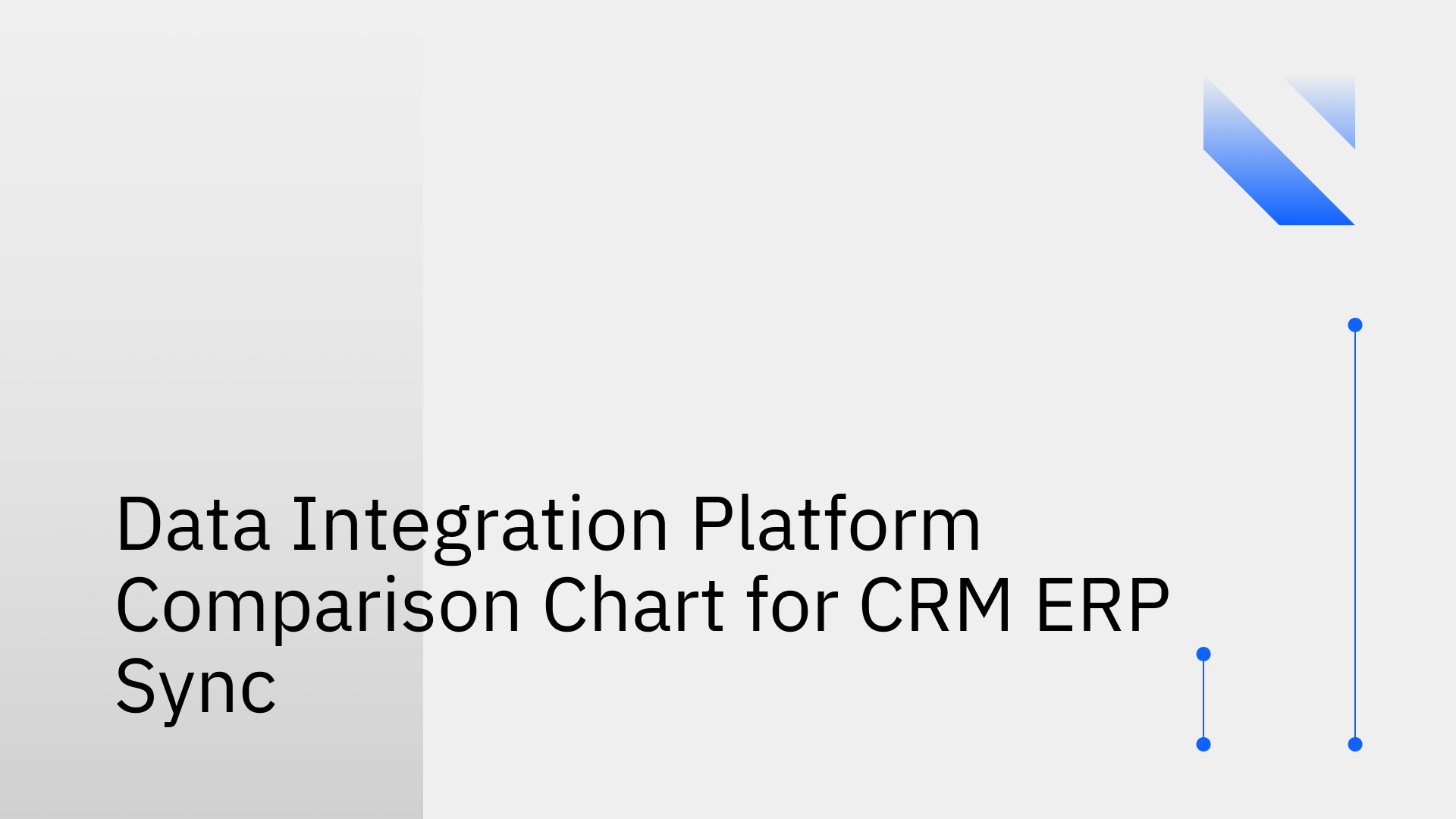

Maintaining data consistency between a Customer Relationship Management (CRM) system like Salesforce and an Enterprise Resource Planning (ERP) system like NetSuite is a mission-critical task. When these operational systems are out of sync, the consequences cascade across the business: sales teams work with inaccurate customer financials, finance departments struggle with revenue reconciliation, and engineering teams are pulled away from core product development to fix brittle, custom-coded integration pipelines. The technical challenge is significant, involving disparate data models, the need for low-latency updates, and robust conflict resolution.
Connecting systems like Salesforce and NetSuite, or a CRM with a production database, is more complex than a simple data transfer. Engineering and data teams face several fundamental technical hurdles
Opportunity object with its various stages does not map cleanly to a NetSuite Sales Order or Invoice. The integration logic must handle these transformations without data loss.Organizations typically turn to one of three approaches to solve the CRM-ERP sync problem, each with significant technical trade-offs.
Building a solution in-house using scripts and APIs offers complete control but creates a significant maintenance burden. These solutions are often brittle, lack proper monitoring, and require dedicated engineering cycles to update and fix. This diverts valuable developer time from building core business features to maintaining integration code.
Platforms like Jitterbit, Informatica, and Talend offer a wide array of connectors for various applications [1][2]. While powerful for general workflow automation, they are often not engineered for the high-frequency, low-latency, bi-directional synchronization required for operational systems. Configuring true bi-directional sync with conflict resolution can be complex and may still rely on batch processing, introducing unacceptable delays.
Tools like Fivetran are excellent for their primary purpose: extracting data from source systems and loading it into a data warehouse for analytics [3]. However, they are fundamentally one-way data pipelines. They are not designed to write data back into operational systems like a CRM or ERP, making them unsuitable for bi-directional synchronization use cases.
The best data integration platform depends on specific business needs, such as ease of use and integration with existing systems [4]. The chart below compares these approaches for the specific challenge of CRM-ERP operational sync.
The limitations of generic tools highlight the need for a new category of platform—one engineered specifically for real-time, bi-directional operational sync. Stacksync is designed to solve this exact problem, providing a reliable and efficient solution to connect CRMs with ERPs and databases.
Unlike general-purpose iPaaS or ETL tools, Stacksync is built on an architecture optimized for high-frequency, two-way data flows between operational systems.
NetSuite Salesforce data sync can be configured in minutes through a no-code interface. For advanced use cases, Stacksync supports configuration-as-code (YAML), giving technical teams version control and programmatic management capabilities [6].While general-purpose integration tools have their place, they are not optimized for the mission-critical task of keeping operational systems like your CRM and ERP in perfect sync. The technical requirements for low latency, bi-directionality, and reliability demand a purpose-built solution.
For organizations looking to reliably connect NetSuite with Salesforce or any CRM with a database, a platform like Stacksync provides an efficient and robust path forward. It eliminates the complexity and maintenance overhead of custom solutions while delivering the real-time performance that generic iPaaS and ETL tools lack. By choosing a tool designed for the specific challenge of operational sync, you empower your teams with consistent, accurate data and create a scalable foundation for future growth.
For further research, organizations can leverage platforms like Gartner Peer Insights to compare tools based on verified user reviews and industry benchmarks [8].